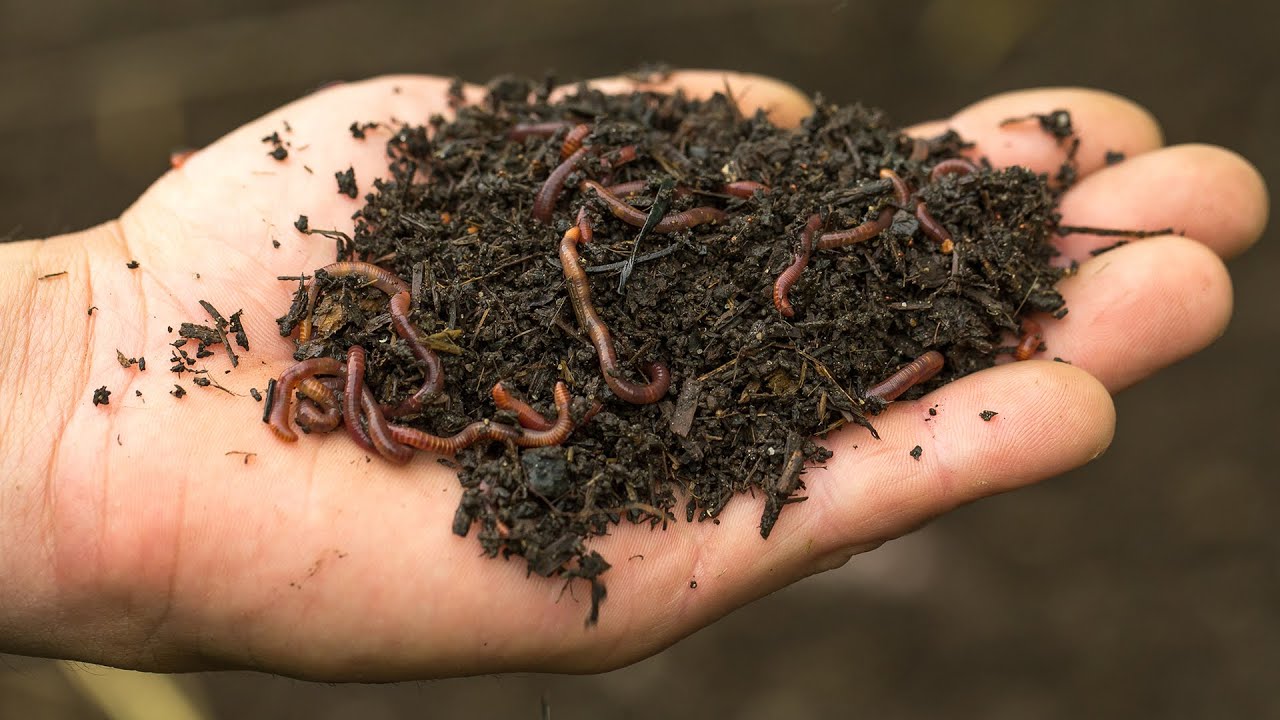Discovering the Devices of Red Wiggler Composting: A Comprehensive Guide to the Process and Its Positive Influence On Lasting Gardening Practices
The elaborate mechanisms of red wiggler composting, making use of the unique physiology of Eisenia fetida, present an engaging method for improving sustainable gardening methods. As urban gardening gains grip, comprehending the subtleties of this composting technique comes to be progressively relevant.
Comprehending Red Wigglers
Red wigglers, clinically known as Eisenia fetida, are a species of earthworm very related to for their efficiency in composting organic waste. These worms grow in nutrient-rich settings, especially in decaying natural matter, making them optimal for vermicomposting systems - Red Wiggler Composting. Characterized by their reddish-brown coloration and segmented bodies, red wigglers are smaller than usual earthworms, generally gauging in between 3 to 4 inches in length
Their one-of-a-kind physiological traits boost their composting capabilities; for example, they possess a high reproductive price, allowing populaces to multiply quickly under ideal conditions. Red wigglers take in organic product, simplifying with their digestive systems, which leads to nutrient-rich spreadings that work as an excellent organic plant food. Their ravenous cravings allows them to refine large volumes of food waste efficiently, considerably decreasing landfill contributions.
Along with their composting expertise, red wigglers play a vital function in dirt wellness. Red Wiggler Composting. They freshen the soil and assist in the disintegration of raw material, additional enriching the dirt community. Recognizing the features and ecological advantages of red wigglers is essential for anybody seeking to apply lasting gardening methods with efficient composting approaches
The Composting Refine
The composting procedure involves damaging down organic materials into nutrient-rich garden compost, a task that red wigglers excel at due to their specialized digestive systems. These worms eat food scraps, yard waste, and other raw material, transforming them into useful garden compost with a series of chemical and biological procedures.
Initially, the raw material is blended with bed linens products such as shredded paper or dried out fallen leaves, producing an ideal atmosphere for the worms. As the red wigglers ingest this mixture, they simplify via their gut, where microbes additionally disintegrate the material. This process creates heat, advertising microbial activity, which increases disintegration.

Benefits of Red Wiggler Composting
Lots of gardeners and eco-conscious individuals acknowledge the numerous benefits of red wiggler composting, making it a prominent choice for efficient waste management. One of the key benefits is its capability to considerably lower organic waste in garbage dumps - Red Wiggler Composting. Red wigglers effectively break down cooking area scraps and other eco-friendly materials, transforming them into nutrient-rich vermicompost that enhances soil wellness
Furthermore, red wiggler composting boosts soil structure and fertility. The resulting vermicompost is bristling with advantageous microbes, which promote plant development and improve nutrient retention. This natural plant food not just sustains lasting horticulture practices but likewise lowers dependence on chemical fertilizers, promoting a much healthier ecosystem.
Furthermore, red wiggler composting is a space-efficient technique, making it optimal for urban gardeners with restricted area. The Learn More Here procedure can be conducted indoors or outdoors, permitting for year-round composting no matter climate conditions. In addition, red wigglers are low-maintenance microorganisms More Bonuses that call for minimal care, making them available for beginner gardeners.
In significance, the advantages of red wiggler composting expand past waste decrease; they add to healthier soils, sustainable gardening practices, and environmental stewardship, placing it as a beneficial practice in contemporary gardening.
Finest Practices for Composting
For successful red wiggler composting, sticking to best techniques is necessary to optimize effectiveness and make certain an efficient setting for these worms. This balance advertises optimal disintegration and enhances the worms' health and wellness.
Next, screen moisture levels, going for a damp, sponge-like uniformity. Extremely wet problems can result in anaerobic disintegration, while extreme dryness might impede worm activity. Furthermore, make certain proper aeration by transforming the compost frequently, which assists protect against compaction and enables appropriate oxygen flow.
Temperature is an additional crucial aspect. Keep a range of 55 ° F to 77 ° F(13 ° C to 25 ° C) to advertise worm activity and microbial growth. Stay clear of presenting meat, dairy products, and oily foods, as these can attract bugs and create smells.
Enhancing Lasting Gardening
Sustainable gardening symbolizes an all natural strategy that balances eco-friendly concepts with sensible horticulture techniques. By incorporating techniques such as red wiggler composting, garden enthusiasts can dramatically boost their practices, cultivating an extra resistant ecosystem. Red wigglers, renowned for their efficient decomposition abilities, transform organic waste into nutrient-rich compost, thereby enriching the soil without counting on chemical fertilizers.
Executing sustainable horticulture strategies, such as plant turning, companion planting, and mulching, further enhances the advantages of composting. These practices not just boost soil structure and fertility yet also promote biodiversity, attracting advantageous insects and microorganisms that add to plant health and wellness. Additionally, using indigenous plants can lower water usage and reduce maintenance, aligning with water preservation efforts.

Conclusion
In conclusion, red wiggler composting represents an essential approach for enhancing sustainable gardening techniques. Inevitably, the adoption of red wiggler composting can substantially add to green horticulture, profiting both city and amateur gardeners in their cultivation initiatives.
The intricate mechanisms of red wiggler composting, utilizing the unique physiology of Eisenia fetida, offer a compelling method for boosting lasting horticulture methods. Comprehending the features and eco-friendly advantages of red wigglers is necessary for anyone looking to carry out sustainable horticulture methods through effective here composting approaches.

In final thought, red wiggler composting represents a vital approach for improving lasting horticulture practices. Inevitably, the fostering of red wiggler composting can considerably add to environment-friendly gardening, profiting both urban and novice gardeners in their growing efforts.